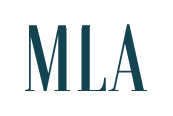What is Photodynamic Therapy?
It is a fact that in today’s world, many patients have skin conditions that affect their appearance and that they would like to have improved. A recent advance called Photodynamic Therapy offers an improved method to treat several skin conditions with a high degree of safety and a quick recovery time.
How it works
Photodynamic Therapy for acne targets the overgrowth of bacteria and the excessive production of oil by enlarged sebaceous glands that are part of the cause of acne. Photodynamic Therapy for acne begins with a thorough cleansing of the skin, after which a medication called Levulan is applied to the skin for approximately 30 minutes. (Levulan is a 20% solution of Aminolevulinic acid, which is a naturally occurring substance found in every person.) During this half-hour period, the Levulan is absorbed by the sebaceous glands on the face. The facial skin is then exposed to blue light of a specific wavelength for approximately 8 minutes. The blue light activates the Levulan, and this ultimately results in a significant reduction in the number of bacteria and a reduction in the production of oil by the sebaceous glands. Since the presence of excessive bacteria and oil in the sebaceous glands are two of the root causes of acne, these changes help to clear the skin of acne.
Who is an ideal candidate?
Ideal candidates for photodynamic acne treatment have moderate or severe acne that has not responded well to the usual topical mediations and antibiotics used to treat acne. Photodynamic acne therapy is also an excellent alternative to Accutane and its associated potential side effects.
Photodynamic Therapy for Facial Rejuvenation and Actinic Keratoses is a slightly different procedure. This treatment is an effective method for treating the brown spots, broken capillaries, freckles, and actinic keratoses (changes in the skin that can lead to skin cancers) that result from sun exposure. The levulan is generally left on the face for a somewhat longer period of time, usually 45-60 minutes. Then, the facial skin is exposed to intense pulsed light. The light activates the Levulan, beginning a chemical reaction that ultimately leads to a substantial reduction in the number of sun damaged skin cells. This treatment results in a reduction in skin pigmentation, a more uniform skin color, improved skin texture, and a more youthful appearing skin. In addition, the treatment also effectively removes many of the actinic keratoses that might be present.
Results
Photodynamic therapy, whether for acne or for facial rejuvenation, is very safe and has the advantage of treating the entire face at one time. Patients will need to remain inside immediately after the procedure and the following day. Some patients might turn red. When this occurs, it generally resolves within a few days, and can be covered with make-up. Generally, patients will need three or four photodynamic treatments to obtain an optimum result.
Photodynamic therapy is a welcome advance in skin care. It has given us a new option for treating our patients, and it has helped our patients improve more quickly than they otherwise would. Our patients have been quite pleased with the results that they have received from Photodynamic Therapy.
